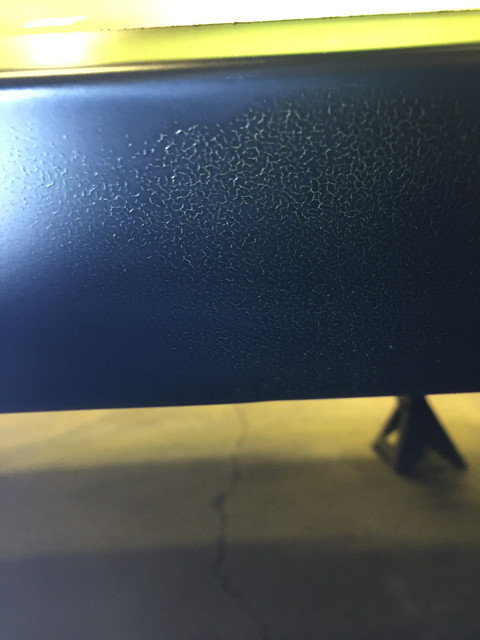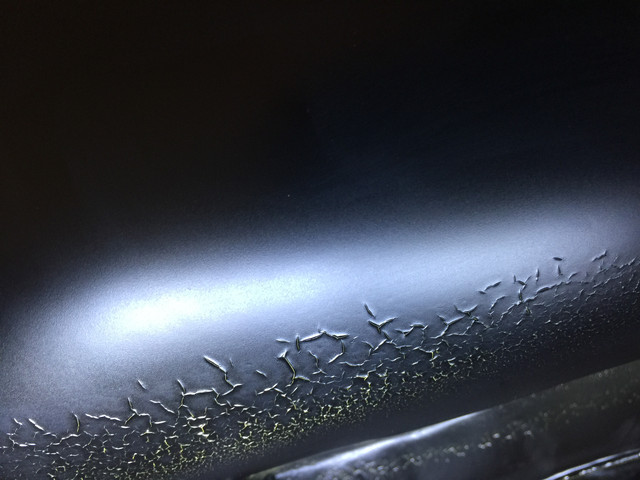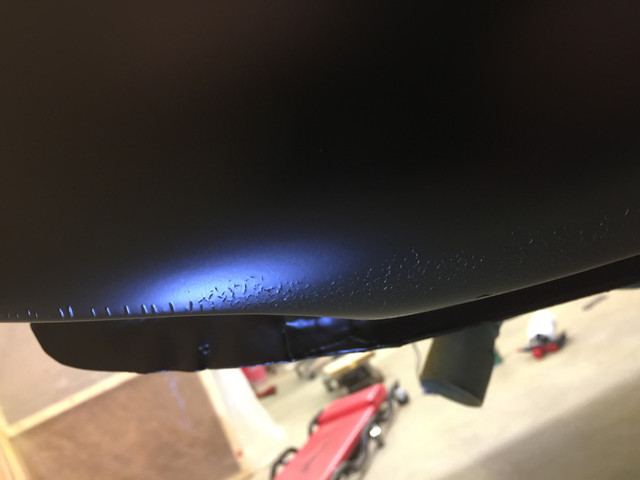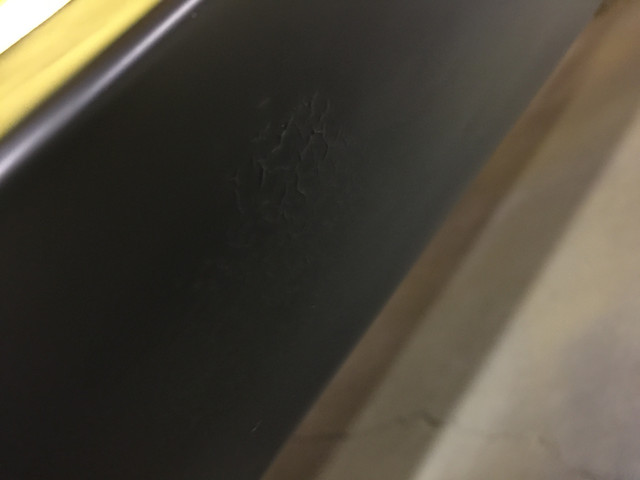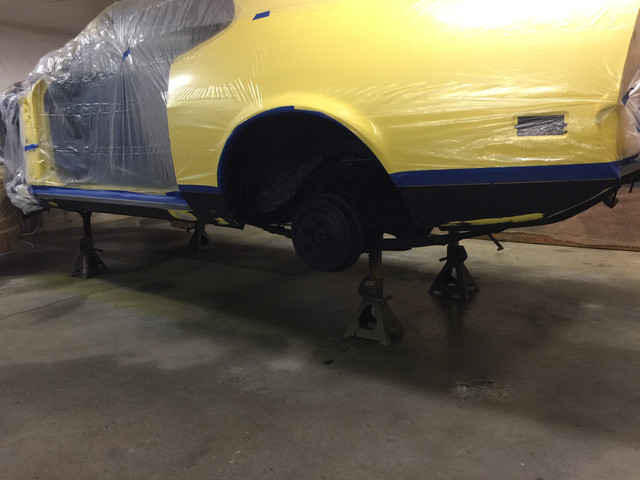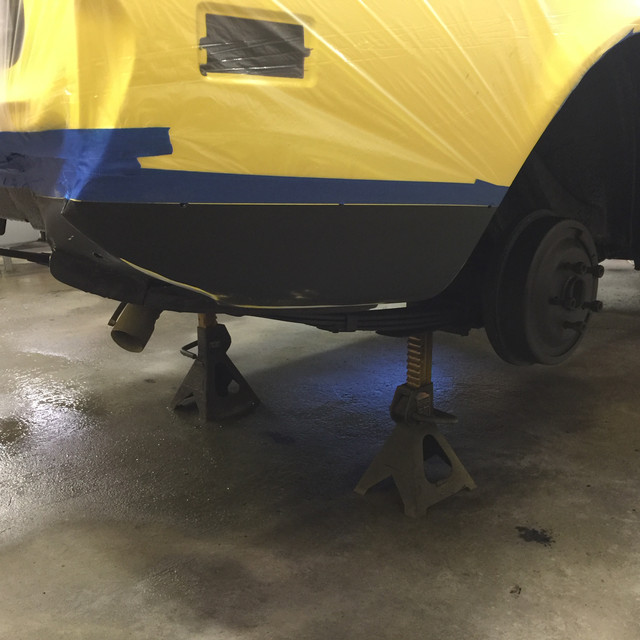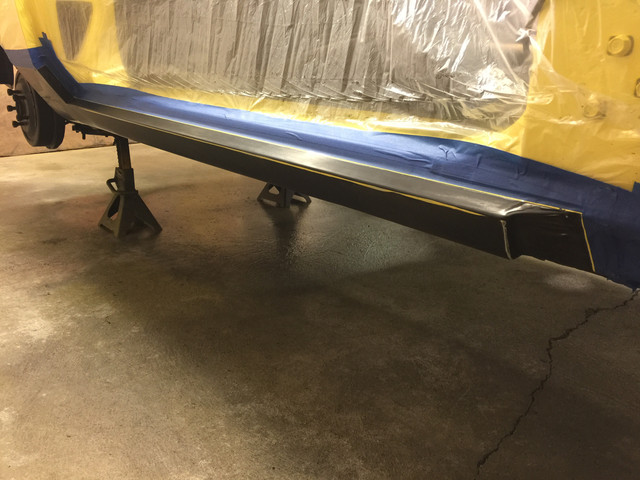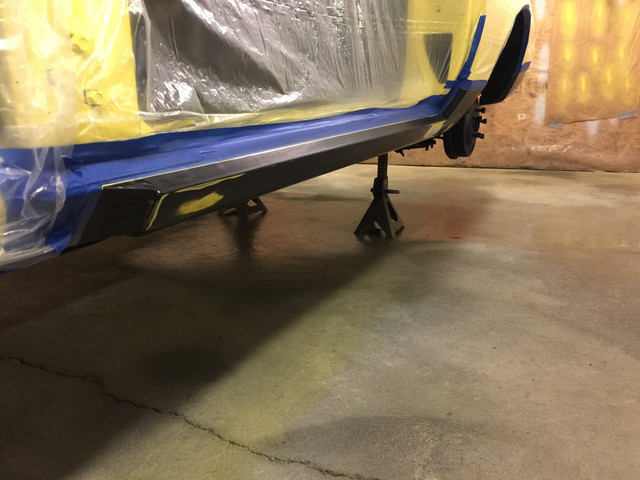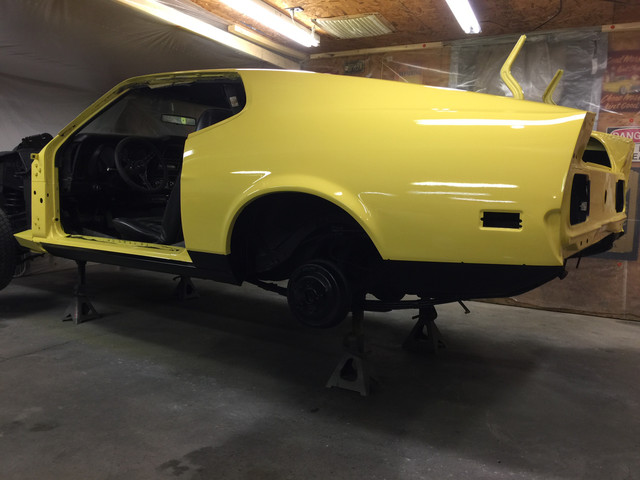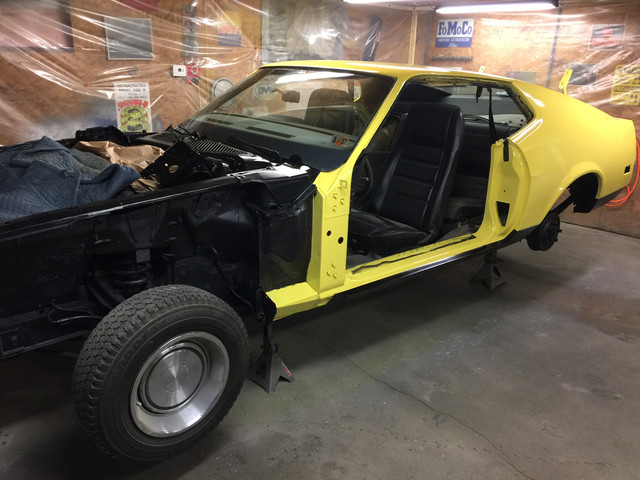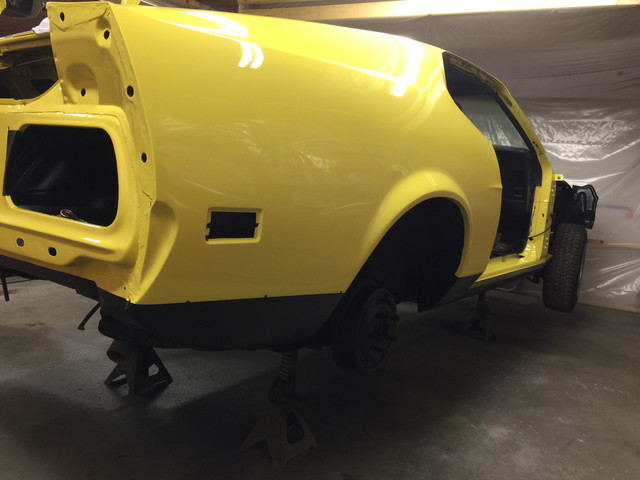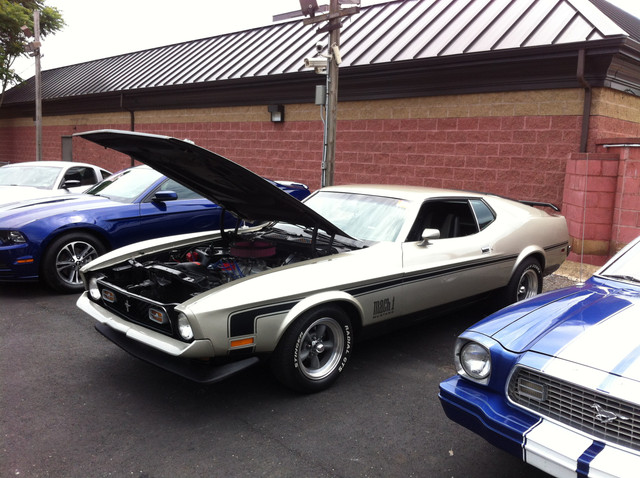Hi Kevin,
OK, this one's a fairly common issue, and i run into this very problem from time to time myself.
I will start first by talking about curing and curing times. You said you used PPG clear. But which type? If you could tell me, i'll pull a tech sheet on it and confirm whether the clear you used is a bake only or a bake and air dry combo clear. In your case, you spray in your garage, and don't bake the paint after you apply it. You let it air dry. If it's a bake only clear, you have bought trouble on yourself, as it will take forever to cure and harden out properly. If it's a combo bake or air dry clear, you're good to go.
However, ambient 24 hr temps play a part in air dry cure out times as well. For example, if it's fairly cold, cure out will take longer to achieve compared to temps being hot. Heat is the accelerator in speeding up the curing and hardening process. In your case, if you have used an air dry clear, and let it dry for two days, with an average temp of around 73 Fahrenheit, that would be OK. However, any colder ambient temps would call for a longer cure out time, and also depending on how much paint you applied - eg, how many coats of clear you sprayed on.
So getting back to your problem, the first thing to bear in mind, is how well your 2 pack clear was cured when you started to apply your Hot Rod Black. If the paint film has not cured enough, it will have issues with accepting fresh solvents, or in other words, it will be solvent sensitive. The Hot Rod Black is a 2 Pack mat black paint. 2pack paint's solvents are more passive than Lacquer paint's solvents, which is a bonus in terms of solvent reaction issues in general terms. However, in your case, that did not save you, as you got a major reaction issue. The problem technically in the game, is called crazing, frying or crows feet.
So what has happened to you here is a combination of two things. Firstly, your clear was not cured enough, and was to a degree, solvent sensitive, and therefore prone to solvent reaction with frying up in places it did. Secondly,and what you said above is very true - the main thing that has let you down or caused the frying up is the thin clear film build. This problem is a common occurrence with most 2 pack clears. If the clear has been applied in a very thin or sparing way, and the film build is very small, then no matter how well the clear is cured or how old or hard it is, it will still be open to getting solvent reaction issues when you apply fresh paint over it. The wetter you apply the fresh paint, the more chance you will run into solvent reaction problems like frying or crazing. Sorry, but that is just the chemical nature of 2 pack clears on the market today. For example, i respray many new car color coded external mirror housings. The car factories tend to skimp on applying much clear to the mirror bodies, and therefore, i sometimes get frying issues when i repaint over them - not good i'm afraid.
So what's the remedy? Make sure you're using an air dry clear / make sure you give the proper cure out time, depending on ambient temps and how much clear you applied / and do not attempt to apply any new paint over any area that has any thin or whispy paint films as a substrate. If you had applied a couple of light to medium wet coats of 2 pack primer/ putty on those thin whispy areas first, or better still, the whole area you were spraying with Hot Rod Black, that would have gotten you out of jail, as you would have isolated off the dodgy substrate, and therefore provided a sound substrate ready to accept any solvents from fresh coats of paint. In your case, your Hot Rod Black. What to do now? Bad news i'm afraid. The fried up paint has to be completely removed, as you can't apply any paint over it now to try and remedy the frying up problem. It does not matter whether you partially sand out the frying, and try to apply primer or putty over it to remedy - it wont work.
Bad paint issues, and spraying over them to get you out of trouble does not work, as they end up showing or coming through again latter on in time. You MUST completely remove all the fried up paint and get back to a sound substrate again, before applying any more paint. Once you have done this, i would then carefully apply about two or three coats of primer/ putty over the entire area you want to finish in Black, sand down, and then move into applying your Hot Rod Black. Don't flog your primer/ putty on with wet coats. Apply each coat in a medium dry/ wet fashion, and give each coat a good flash off time before applying the next coat. This application technique minimizes the risk of any more solvent reaction happening. You could use an epoxy primer, which is a good isolator, but it's probably overkill there, as your 2 pack primer/ putty will do the job of isolating off the thin whispy painted areas successfully. Primer/ putties, putties, sealers, and isolators all have very low solvent content, and are very passive in that regard. They therefore greatly minimize the risk of any further solvent reactions occurring to any a solvent sensitive substrate. With most 2 Pack clear coats,the standard default is two medium or medium wet spray coats of clear, be it HS or MS clear, and proper cure out time for no frying issues occurring. One light coat or a whispy light coat of clear is asking for fry up issues to occur, no matter how well that thin paint film has cured out.
The frying problem is all about adverse solvent reaction to an existing paint film - the remedy is to try and minimize the chances of this happening as talked about above. Hope that was of help Kevin, and best of luck with your respray.
Cheers,
Greg.

